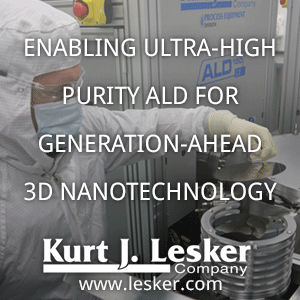Nanexa AB (publ) today announced that the company has entered into an investment agreement with Applied Ventures, LLC, the venture capital arm of Applied Materials, Inc., whereby Applied Ventures intends to invest up to USD 3 million in Nanexa during 2021 to support continued development and expansion. USD 1 million will be invested in January 2021 and additional investments of up to USD 2 million are planned later in 2021. The investment will be made through a directed issue to Applied Ventures of a mix of shares and share warrants decided upon by Nanexa with support of the authorization of the Annual General Meeting held on June 2, 2020 (the “Directed Issue”).

As announced today in a separate press release, Nanexa and Applied Materials have entered into a joint development agreement to validate, adapt and scale up Nanexa’s production of ALD-coated injectable drugs. Simultaneously, Nanexa has entered into an investment agreement with Applied Ventures, pursuant to which Nanexa has undertaken to, as authorized by the Annual General Meeting held on June 2, 2020, resolve to issue up to a total of 4 244 770 new shares and share warrants of series 2020/2021 in Nanexa, and Applied Ventures has undertaken to subscribe for newly issued shares and share warrants. In total, Applied Ventures has committed to invest at least USD 1 million, but the Directed Issue is intended to raise around USD 3 million before transaction costs.
“We are very pleased to welcome Applied Ventures as a new industrial investor in Nanexa. Their support is a great recognition of the PharmaShell® technology and Nanexa’s future potential,” says David Westberg, CEO of Nanexa.
The Directed Issue is divided into two tranches where the first tranche amounts to an investment of USD 1 million. The subscription price for the shares of the first tranche shall equal the volume weighted average price (“VWAP”) during the period from and including December 22, 2020 until and including January 11, 2021, less five percent. The SEK investment amount in the first tranche shall be determined by the average USD/SEK exchange rate during the same measurement period.
For the second tranche Applied Ventures has the option, but not the obligation, to exercise warrants of series 2020/2021 to subscribe for up to the number of shares equal to 4 244 770 shares less the number of shares issued in the first tranche. The warrants can be exercised during two different subscription periods; 1-15 April 2021 and 1-15 December 2021. Applied Ventures will take a decision on how many warrants to exercise in each subscription period. The subscription price in the second tranche shall equal the VWAP during the ten trading days immediately preceding the respective subscription periods, less ten percent.
The maximum potential dilution from the Directed Issue is 16.7 percent of the number of shares in Nanexa after the Directed Issue and full exercise of the issued share warrants.
“Applied Ventures is excited to invest in Nanexa and help the company scale up its unique approach of using an atomic layer deposition process on APIs to enable key benefits for the end drugs. This is a good example of how Applied’s core competency in materials engineering can be extended to new markets. It also reflects Applied Ventures’ focus on investing globally in companies across their full life-cycle and adds to our growing portfolio of investments in Europe,” said Anand Kamannavar, Global Head of Applied Ventures.
About Applied Ventures
Applied Ventures, LLC, the venture capital arm of Applied Materials, invests in innovative technology companies globally that have the potential to deliver exceptional strategic and financial returns. Its investments help develop technologies and markets that provide natural extensions to Applied Materials’ core business and stimulate the application of materials engineering for semiconductors, displays, and related products and services. Learn more at
www.appliedventures.com or follow
@Applied_VC.
About Nanexa AB (publ) (LINK)
Nanexa AB is a nanotechnology drug delivery company focusing on the development of PharmaShell®, a new and groundbreaking drug delivery system with great potential in a number of medical indications. Within the framework of PharmaShell®, Nanexa has partnership agreements with among others, AstraZeneca.



%20(1).png)




















